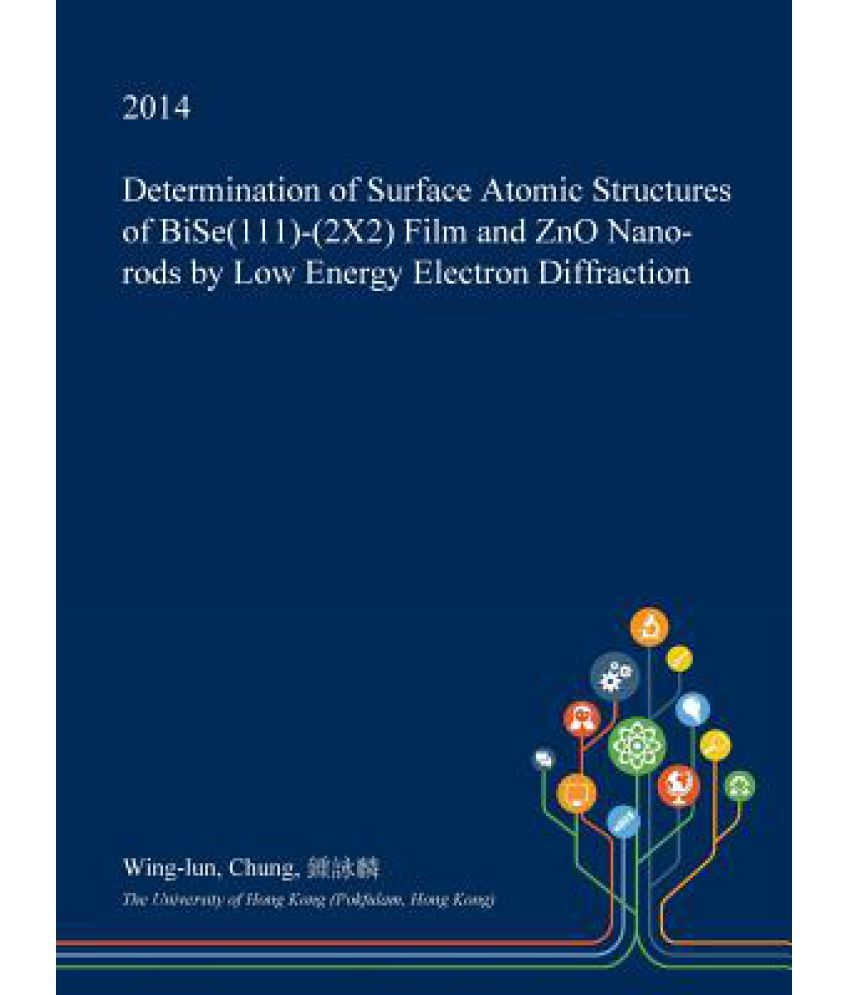Something went wrong. Please refresh the page and try again.
Something went wrong. Please refresh the page and try again.
Notifications can be turned off anytime from settings.
Item(s) Added To cart
Qty.
Something went wrong. Please refresh the page and try again.
Something went wrong. Please refresh the page and try again.
Exchange offer not applicable. New product price is lower than exchange product price
Please check the updated No Cost EMI details on the payment page
Exchange offer is not applicable with this product
Exchange Offer cannot be clubbed with Bajaj Finserv for this product
Product price & seller has been updated as per Bajaj Finserv EMI option
Please apply exchange offer again
Your item has been added to Shortlist.
View AllYour Item has been added to Shopping List
View AllSorry! Determination of Surface Atomic Structures of Bi₂se₃(111)-(2x2) Film and Zno Nano-Rods by Low Energy Electron Diffraction is sold out.


You will be notified when this product will be in stock
| ||||||||||||||
Learn More about the Book
This dissertation, "Determination of Surface Atomic Structures of Bi₂Se₃(111)-(2X2) Film and ZnO Nano-rods by Low Energy Electron Diffraction" by Wing-lun, Chung, 鍾詠麟, was obtained from The University of Hong Kong (Pokfulam, Hong Kong) and is being sold pursuant to Creative Commons: Attribution 3.0 Hong Kong License. The content of this dissertation has not been altered in any way. We have altered the formatting in order to facilitate the ease of printing and reading of the dissertation. All rights not granted by the above license are retained by the author.
Abstract:
The emergence of topological insulators and nano-materials brings the importance of surface science to a new level. The properties of topological insulator depend strongly on surface state. The novel properties of nano-materials are strictly related to their surfaces structure due to the large surface-area-to-volume ratio. In this thesis, I investigated the surface morphology of the Bi2Se3(111)-(2x2) reconstruction and the ZnO nano-rods by means of low energy electron diffraction(LEED).
Bi2Se3(111)-(2x2) was prepared by molecular beam epitaxy, and the reconstruction is believed to be caused by Se adsorption. An atomic model with Se on the top site is proposed by the virtue of multiple incidence angles LEED IV Patterson inversion.
Well aligned ZnO nano-rods array were prepared by template-assisted hydrothermal growth and vapour phase transport growth. Nono-rods prepared by vapour phase transport method were able to give the LEED IV spectra. The side facet orientation is found to be {101 ̅0} in the LEED perspective. The peak shifts of nano-rod IV spectra suggest that the nano-rods undergo a different extent of relaxation compared with that of single crystal. Here, I emphasise it is the first ever successful extraction of LEED IV from free standing nano-material surfaces.
Although the above proved LEED is a powerful technique in surface morphology analysis, conventional LEED optics suffers electric charge up when probing high-resistivity material. In order to bring LEED to its widest potential, microchannel plate low energy electron diffraction (MCP-LEED) system was implemented. MCP-LEED avoids the charge up by bringing the electron beam current further down to the order of nA, when compared with mA of the conventional LEED system. An automate LEED data acquisition scheme was installed on the MCP-LEED system and the validity of the MCP-LEED system was verified by comparing its LEED IV spectra with that of the conventional LEED. The capability of MCP-LEED is justified by probing the high-resistivity ZnO single crystal manufactured by Tokyo Denpa. Pros and cons, as well as suggested future improvements of MCP-LEED are discussed.
DOI: 10.5353/th_b5295506
Subjects:
Low energy electron diffraction
Bismuth compounds - Surfaces
Atomic structure
Zinc oxide - Surfaces
The images represent actual product though color of the image and product may slightly differ.
Register now to get updates on promotions and
coupons. Or Download App